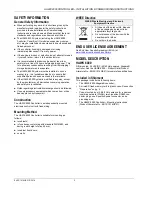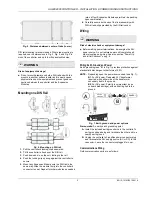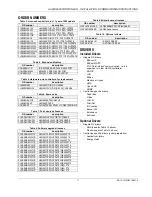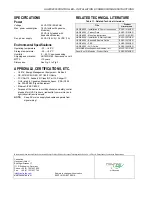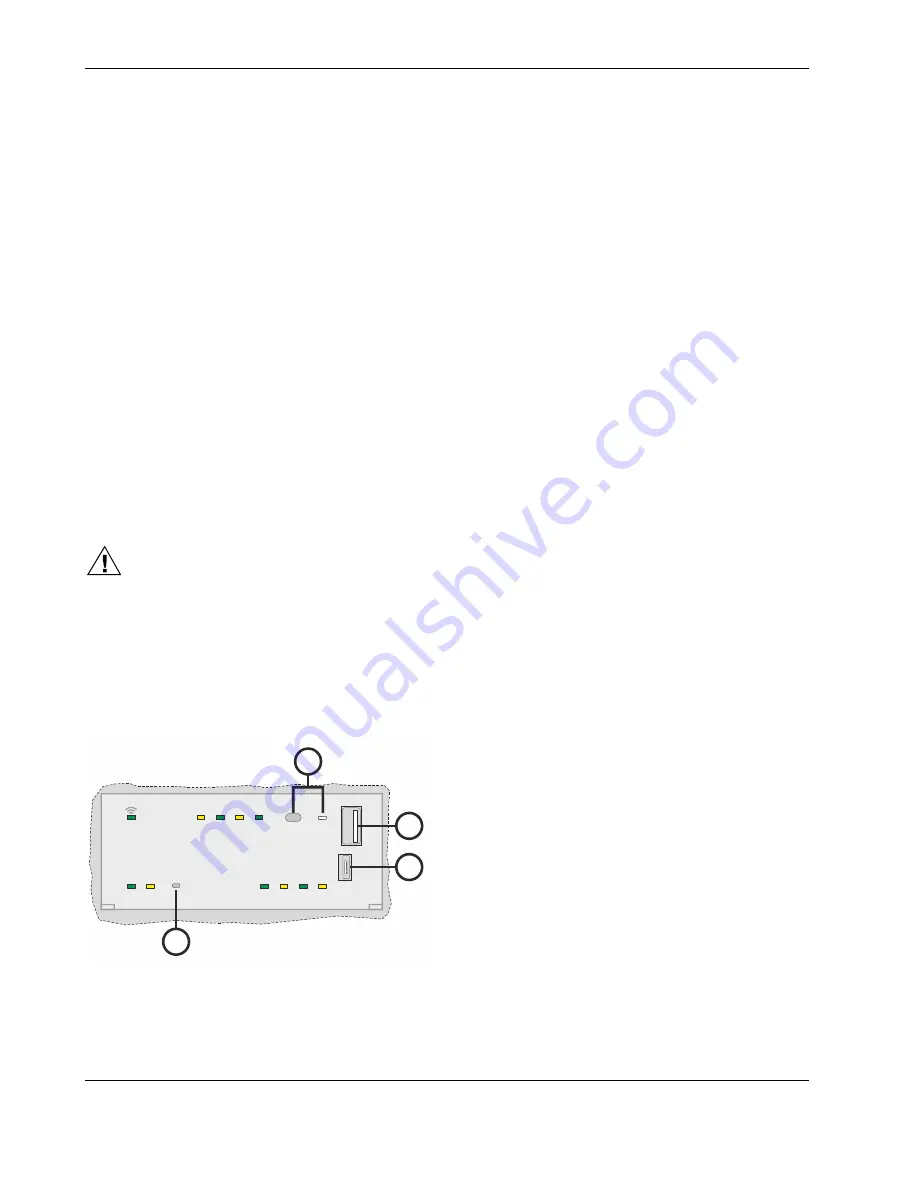
HAWK 8000 CONTROLLER – INSTALLATION & COMMISSIONING INSTRUCTIONS
EN1Z-1016GE51 R0218
10
during which time the LED will flash in the "Working Mode"
pattern. When the backup completes, the LED will become
dark, and the USB drive can then be removed.
Boot to recover or restore image:
The unit is powered up
while holding down the BACKUP button, for either:
▪ (No USB media detected): A "factory defaults" recovery
from an onboard partition with the default image.
▪ (If USB media is detected): For the restoration of a backup
image on the USB flash drive. NOTE that this also
requires a serial shell connection to the controller's Debug
port.
In either case, the BACKUP LED will start flashing in the
"Alert Mode" pattern. If you then release the BACKUP button
during this period (within 5 seconds), initiation begins for
either:
▪ If no USB media is detected, the "factory defaults"
recovery image installation.
▪ If USB media is detected, the system enters the "restore
mode." In this mode, after log-in with serial shell, a menu
will list the available backup images on the USB flash
drive. You can select one (and enter the unique security
key to initiate its installation), or alternately select to install
the "factory defaults" recovery image.
During a recovery or restore image installation, the LED
flashes in the "working mode" pattern. When the image
installation completes, the BACKUP LED turns OFF. A
controller reboot is then required.
See also the HAWK 8000 Backup and Restore Guide (EN2Z-
1027GE51) for complete details.
CAUTION
Do not remove power while a recovery image install or
backup restore is in progress, i.e., when the BACKUP
LED is flashing in the "working mode" pattern (1 sec
ON / 1 sec OFF, or slow flash). Otherwise, the con-
troller will be inoperable ("bricked"), and must be
returned to a service center for repair.
USB Ports and Pushbuttons
Behind the controller's front access door, there are two USB
ports, two pushbuttons, and an associated LED.
BACKUP
SEC
STAT BEAT SHT/DWN
PRI
DEBUG
COM-1
A-RS485-B
COM-2
1
2
3
4
Fig. 15. HAWK 8000 Controller USB ports and
pushbuttons (shown here with access door opened)
Legend
1.
BACKUP button and corresponding BACKUP LED.
2.
PROG: USB 2.0 for use with USB flash (thumb) drive.
3.
DEBUG: Micro-A USB for serial debugging
communications.
4.
SHT/DWN: Recessed pushbutton for initiating a
controlled shutdown.
The DEBUG port is a standard Micro-A type USB port for
serial debugging communications to the controller. You can
use a serial terminal program (for example: PuTTY) to access
the controller's "system shell" menu. This provides access to
a few basic platform settings.
Default DEBUG port settings are: 115200, 8, N, 1 (baud rate,
data bits, parity, stop bits). For more details, see the HAWK
8000 – Installation & Startup Guide (EN1Z-1027GE51).
NOTE:
Logging in will require admin-level platform
credentials.
The SHT/DWN pushbutton initiates a "controlled shutdown" of
the controller, ensuring that all station data is preserved. This
provides an alternative to the platform "stop station"
command, while connected online with the controller.
Initiating a Controller Shutdown
When locally servicing an installed and configured
(commissioned) unit, use this feature before removing power.
NOTE:
Do not initiate a shutdown or remove power if:
The BACKUP LED is flashing in the "working mode"
pattern or
The BEAT LED is flashing at a 90% / 10% ON/OFF
rate.
Instead, wait for the BACKUP LED to change to a
different state (typically: OFF), and for the BEAT
LED to flash at the normal 50% / 50% ON/OFF duty
cycle rate before initiating a shutdown.
Prerequisite:
The HAWK 8000 controller must have been
commissioned (Niagara 4 installed, platform configured, a
station installed) and the unit must be running the station.
1.
Press and hold down the recessed SHT/DWN button
just until the BACKUP LED begins flashing in the "alert
mode" pattern: 100 ms ON / 100 ms OFF, repeating
(fast).
2.
Release the SHT/DWN button during this alert mode.
This starts the shutdown process, where the station and
the software are put into a safe state. During this
shutdown, the BACKUP LED flashes in the "working
mode."
3.
When the shutdown has been completed, the BACKUP
LED will turn OFF. You can now safely remove 24V
power from the unit.
NOTE:
In cases where the system cannot be put into a safe
state, the BACKUP LED will flash in the "error mode"
pattern: two quick (200 ms) flashes ON, 3 seconds
OFF, repeating.


